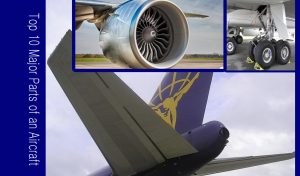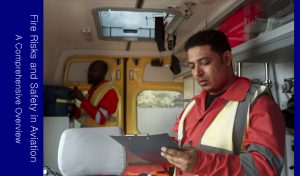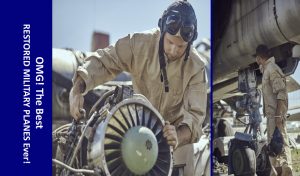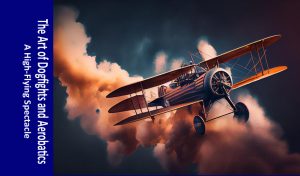The evolution of aerobatic aircraft during the World War II era was significant and influenced the development of aerobatic and high-performance aircraft for decades to come. World War II marked as a period of rapid technological growth in the aviation sector, leading to the creation of aircraft that were not only capable of combat but also excelled in aerobatic maneuvers. Here are some key developments and knowledge in aerobatic aircraft during this so called era.
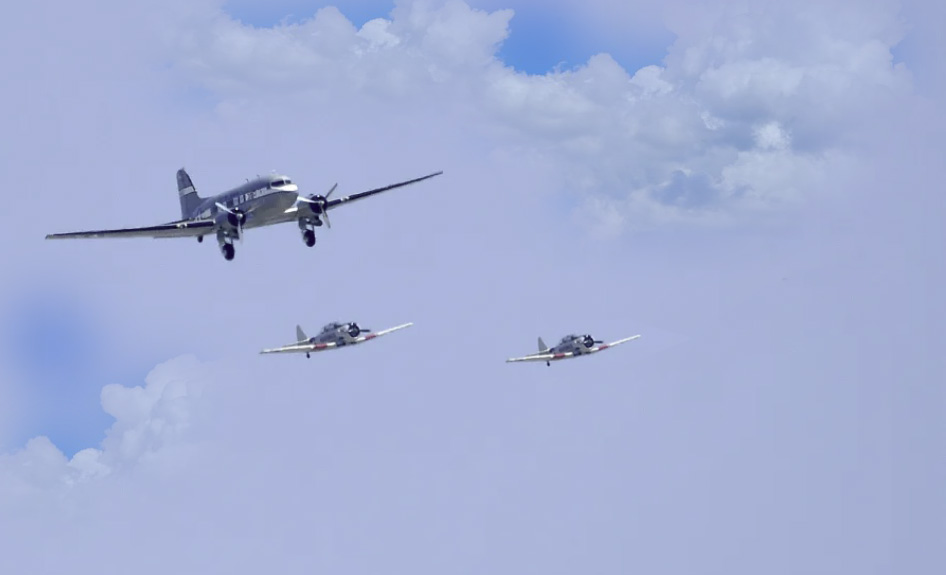
P-51 Mustang:
The P-51 Mustang, primarily a long-range fighter aircraft, became famous for its high-speed capabilities and exceptional maneuver ability. Pilots often used it for aerobatic displays, showcasing its agility and precision.
Here are some information about the P-51 Mustang.
- Type: Fighter aircraft
- Manufacturer: North American Aviation
- First Flight: October 26, 1940
- Service Entry: 1942
- Primary Users: United States Army Air Forces, Royal Air Force (under the name Mustang), and other Allied air forces
- Role: Long-range escort fighter, ground attack aircraft
- Engine: Initially equipped with the Allison V-1710 engine; later versions used the more powerful Rolls-Royce Merlin engine
- Maximum Speed: Over 400 mph (Mach 0.52)
- Range: Approximately 1,650 miles (with external fuel tanks)
- Armament: Typically equipped with six .50 caliber Browning M2 machine guns, and could carry bombs and rockets
- Significance: Played a critical role in gaining air superiority in both the European and Pacific theaters during World War II
- Famous Variants: P-51B, P-51D, and the British Mustang Mk IV (P-51K)
- Notable Feature: Exceptional high-altitude performance and long endurance, thanks to the Rolls-Royce Merlin engine
- Legacy: Remains an iconic symbol of American aviation and is highly regarded in the history of military aircraft
The P-51 Mustang’s combination of speed, firepower, and range made it a formidable fighter aircraft during World War II and contributed significantly to the success of Allied air campaigns.
Supermarine Spitfire:
The Spitfire was a British fighter aircraft known for its elegant design and remarkable agility. It became a symbol of the Royal Air Force (RAF) during WWII and was used in various air shows and aerobatic displays.

Certainly, here’s information about the Supermarine Spitfire
- Type: Fighter aircraft
- Manufacturer: Supermarine, a British company
- First Flight: March 5, 1936
- Service Entry: 1938
- Primary Users: Royal Air Force (RAF), many other Allied air forces during World War II
- Role: Fighter-interceptor, reconnaissance, and ground-attack aircraft
- Engine: Initially equipped with the Rolls-Royce Merlin engine, later variants used various engines
- Maximum Speed: Varied depending on the model, but some reached speeds over 400 mph (Mach 0.53)
- Range: Varies by model, but typically had a range of around 430 to 600 miles
- Armament: Typically equipped with eight .303 Browning machine guns; later models had additional cannons and rockets
- Notable Variants: Spitfire Mk I, Mk V, Mk IX, and Mk XIV, among others
- Significance: Played a crucial role in the Battle of Britain and throughout World War II as one of the most iconic and effective fighter aircraft of the era
- Notable Feature: Iconic elliptical wing design, excellent maneuverability, and a reputation for dogfighting prowess
- Legacy: Remains one of the most celebrated and recognizable aircraft in aviation history, symbolizing British resistance during WWII
- Total Production: Over 20,300 Spitfires were built during and after World War II.
- Post-War Service: Continued to serve in various air forces and roles after the war and even in civilian capacities, including air racing.
- Cultural Impact: The Spitfire is a symbol of British valor and determination during WWII, often associated with Winston Churchill’s famous quote, “Never in the field of human conflict was so much owed by so many to so few.”
The Supermarine Spitfire is a legendary British aircraft known for its role in defending Britain during the Battle of Britain and its iconic design, making it an enduring symbol of British aviation history.
Messerschmitt Bf 109:
The Bf 109, a German fighter aircraft, was highly versatile and used extensively in aerobatic performances during air shows, demonstrating its ability to perform tight turns and rolls.
Here’s information about the Messerschmitt Bf 109
- Type: Fighter aircraft
- Manufacturer: Messerschmitt AG, a German company
- First Flight: May 29, 1935
- Service Entry: 1937
- Primary Users: Luftwaffe (German Air Force), and later, several Axis and post-war air forces
- Role: Fighter-interceptor and ground-attack aircraft
- Engine: Initially equipped with the Jumo 210 engine, later versions used the Daimler-Benz DB 601 and other engines
- Maximum Speed: Varied depending on the model, but later versions reached speeds of over 400 mph (Mach 0.53)
- Range: Typically had a range of around 400 to 520 miles
- Armament: Typically equipped with machine guns and cannons; armament varied by model
- Notable Variants: Bf 109E, Bf 109F, Bf 109G, Bf 109K, and others
- Significance: The Bf 109 was the backbone of the Luftwaffe during World War II, serving as the primary German fighter aircraft and achieving significant success in various theaters.
- Notable Feature: Sleek, aerodynamic design and a highly maneuverable airframe, making it a formidable dogfighter
- Legacy: Remains one of the most iconic and widely recognized fighter aircraft of World War II, symbolizing German air power during the conflict
- Total Production: Over 33,000 Bf 109s were built, making it one of the most produced fighter aircraft in history.
- Post-War Service: Some Bf 109 variants were used by other air forces after World War II and continued to serve in various roles.
- Cultural Impact: The Bf 109 is often associated with the German Luftwaffe and its role in World War II. Its design is emblematic of German military aviation during the war.
The Messerschmitt Bf 109, with its distinctive design and historical significance, is an iconic symbol of German aviation during World War II.
Yakovlev Yak-3:
The Soviet Yak-3 was a lightweight, highly maneuverable fighter aircraft. It was favored by Soviet pilots for its aerobatic capabilities and often showcased in aerial displays.
Here’s information about the Yakovlev Yak-3
- Type: Fighter aircraft
- Manufacturer: Yakovlev Design Bureau, a Soviet company
- First Flight: 1943
- Service Entry: 1944
- Primary User: Soviet Air Force
- Role: Fighter-interceptor and ground-attack aircraft
- Engine: Powered by the Klimov VK-107A V-12 liquid-cooled inline engine
- Maximum Speed: Approximately 437 mph (Mach 0.57)
- Range: Around 558 miles
- Armament: Typically equipped with a 20mm cannon and two 12.7mm machine guns
- Notable Feature: Exceptional agility and maneuverability, making it a superb dogfighter
- Significance: Considered one of the best Soviet fighter aircraft of World War II, renowned for its high speed, great handling, and impressive climb rate
- Notable Variants: The Yak-3U and Yak-3P were notable variants with different engines and armaments.
- Legacy: The Yak-3 played a significant role on the Eastern Front during World War II, contributing to Soviet air superiority against the Luftwaffe. It’s often remembered as one of the top Soviet fighter aircraft of the war.
- Total Production: Approximately 4,848 Yak-3 aircraft were built.
- Post-War Service: While it saw limited service after World War II, it had a lasting impact on Soviet aviation design and served as a basis for future aircraft.
The Yakovlev Yak-3, with its remarkable performance and agility, is celebrated as one of the standout Soviet fighter aircraft of World War II and a testament to Soviet aviation engineering.
North American T-6 Texan:
While primarily a training aircraft, the T-6 Texan became a popular choice for aerobatic teams during WWII and in the post-war years. It was robust and could handle a wide range of aerobatic maneuvers.

Basic information about the North American T-6 Texan
- Type: Trainer aircraft
- Manufacturer: North American Aviation
- First Flight: April 1, 1935
- Service Entry: Late 1930s
- Primary Users: United States Army Air Forces, United States Navy, and numerous other air forces worldwide
- Role: Primary trainer aircraft for military pilots
- Engine: Typically powered by a Pratt & Whitney R-1340 radial engine
- Maximum Speed: Approximately 208 mph
- Range: Approximately 730 miles
- Armament: Typically unarmed in its training role, but some variants were equipped for light combat with machine guns and bombs.
- Notable Variants: The T-6 Texan had various variants, including the AT-6 Texan used as an advanced trainer and the SNJ Texan used by the U.S. Navy.
- Significance: The T-6 Texan was a critical training aircraft during World War II, helping to prepare thousands of pilots for combat duty.
- Training Role: It was widely used to train military pilots in various countries due to its rugged design, reliability, and forgiving flight characteristics.
- Legacy: The T-6 Texan left a lasting impact on military aviation and is considered one of the most successful and enduring training aircraft in history.
- Total Production: Over 15,000 T-6 Texans were built, and many were used post-war for civilian purposes.
- Post-War Service: After World War II, surplus T-6 Texans found civilian applications, including as crop dusters, air racers, and aerobatic aircraft.
- Cultural Impact: The T-6 Texan remains a popular choice for airshows and civilian pilot training, preserving its place in aviation history.
The North American T-6 Texan holds a special place in aviation history as a highly effective and versatile training aircraft that contributed significantly to pilot preparation during World War II and beyond.
Hawker Hurricane:
Similar to the Spitfire, the Hurricane was a British fighter aircraft that saw significant use in aerobatic displays. Its rugged design and agility made it a favorite among pilots.
Here’s information about the Hawker Hurricane
- Type: Fighter aircraft
- Manufacturer: Hawker Aircraft
- First Flight: November 6, 1935
- Service Entry: 1937
- Primary User: Royal Air Force (RAF), other Allied air forces
- Role: Fighter-interceptor and ground-attack aircraft
- Engine: Initially equipped with the Rolls-Royce Merlin engine, later versions used various engines.
- Maximum Speed: Approximately 340 mph (Mach 0.44)
- Range: Around 460 miles
- Armament: Typically equipped with eight .303 Browning machine guns and could carry bombs and rockets.
- Notable Variants: The Hurricane Mk I, Mk II, and Mk IIC were some of the most prominent variants.
- Significance: Played a crucial role in the defense of Britain during the Battle of Britain and throughout World War II as the RAF’s most numerous fighter aircraft.
- Notable Feature: Sturdy construction and effective design, with a fabric-covered fuselage and a high-wing configuration.
- Legacy: While often overshadowed by the Supermarine Spitfire, the Hurricane was a workhorse of the RAF and played a significant role in the Allied victory in World War II.
- Total Production: Over 14,000 Hurricanes were built, making it one of the most produced aircraft of the war.
- Post-War Service: Some Hurricanes served in various air forces after World War II and even as a ground-attack aircraft.
- Cultural Impact: The Hurricane remains a symbol of the Battle of Britain and the resilience of the RAF during one of the most critical periods of World War II.
The Hawker Hurricane, with its robust design and historical significance, is remembered as one of the key aircraft that defended Britain during the Battle of Britain and contributed to Allied victory in World War II.
Japanese Zero:
The Mitsubishi A6M Zero, used by the Imperial Japanese Navy, had excellent maneuverability. Which was demonstrated in aerobatic shows to showcase its abilities.
Certainly, here’s information about the Japanese Mitsubishi A6M Zero
- Type: Fighter aircraft
- Manufacturer: Mitsubishi Heavy Industries and other Japanese companies
- First Flight: April 1, 1939
- Service Entry: 1940
- Primary User: Imperial Japanese Navy and later, other Axis air forces
- Role: Naval fighter-interceptor and carrier-based aircraft
- Engine: Powered by a Nakajima Sakae radial engine
- Maximum Speed: Approximately 331 mph (Mach 0.43)
- Range: About 1,930 miles
- Armament: Typically equipped with two 7.7mm machine guns and two 20mm cannons, later variants had additional armament.
- Notable Variants: The A6M2 Zero and A6M5 Zero were some of the most well-known variants.
- Significance: The A6M Zero was highly maneuverable and had a remarkable range, making it a formidable fighter aircraft during the early years of World War II in the Pacific.
- Notable Feature: Exceptional maneuverability and a lightweight design, but relatively light armor and limited self-sealing fuel tanks.
- Legacy: The A6M Zero is known for its early successes in the Pacific theater, but as the war progressed, it was outclassed by more advanced Allied aircraft.
- Total Production: Over 10,000 A6M Zeros were built, making it one of the most produced Japanese aircraft.
- Post-War Service: After World War II, some A6M Zeros served in various capacities, including as trainers and in air racing.
- Cultural Impact: The A6M Zero is often associated with early Japanese successes in the Pacific and is a symbol of Japanese naval airpower during the early years of World War II.
The Mitsubishi A6M Zero is remembered for its agility and early successes in the Pacific theater but faced challenges against more advanced Allied aircraft as the war progressed.
Messerschmitt Me 262:
As one of the first operational jet fighters, the Me 262 brought a new level of speed and performance to the skies. While not as agile as propeller-driven aircraft, it marked a significant advancement in aerobatic technology.
Here’s information about the Messerschmitt Me 262
- Type: Jet-powered fighter aircraft
- Manufacturer: Messerschmitt AG, a German company
- First Flight: April 18, 1941 (pioneering jet prototypes); April 22, 1942 (Me 262 prototype)
- Service Entry: 1944
- Primary User: Luftwaffe (German Air Force)
- Role: Fighter-interceptor and ground-attack aircraft
- Engines: Initially powered by two Junkers Jumo 004 turbojet engines
- Maximum Speed: Approximately 540 mph (Mach 0.71)
- Range: About 652 miles
- Armament: Typically equipped with four 30mm MK 108 cannons and/or 24 R4M rockets; later variants had additional armament options.
- Notable Variants: The Me 262 A-1a was the primary fighter version, while the Me 262 A-2a was adapted for ground attack.
- Significance: The Me 262 was the world’s first operational jet-powered fighter aircraft and represented a leap forward in aviation technology during World War II.
- Notable Feature: Jet propulsion provided significantly higher speeds and altitudes compared to propeller-driven aircraft of the era.
- Legacy: The Me 262, although introduced late in the war, had a lasting impact on post-war aviation development and the future of jet-powered aircraft.
- Total Production: Approximately 1,430 Me 262 aircraft were built, but production was hampered by wartime challenges.
- Post-War Service: After World War II, some Me 262s were captured and tested by Allied forces, contributing to the development of jet technology.
- Cultural Impact: The Me 262 is a symbol of Germany’s late technological advances in World War II and the potential of jet propulsion in aviation.
The Messerschmitt Me 262 stands out as a groundbreaking jet-powered fighter aircraft that marked a significant advancement in aviation technology during World War II and had a lasting impact on the future of military aviation.
Hawker Sea Fury:
Although it came into service toward the end of World War II, the Sea Fury was a piston-engine fighter that possessed impressive speed and maneuverability. Making it a popular choice for aerobatic displays in the post-war years.
Here’s information about the Hawker Sea Fury
- Type: Fighter aircraft
- Manufacturer: Hawker Aircraft
- First Flight: September 21, 1944
- Service Entry: 1947
- Primary User: Royal Navy, with limited use in other naval air forces
- Role: Carrier-based fighter and ground-attack aircraft
- Engine: Typically powered by a Bristol Centaurus XII radial engine
- Maximum Speed: Approximately 460 mph (740 km/h)
- Range: About 700 miles (1,100 km)
- Armament: Typically equipped with four 20mm Hispano Mk V cannons and could carry rockets, bombs, or torpedoes for ground and naval attack missions.
- Notable Variants: The Sea Fury had several versions, with the FB.11 being one of the most prominent fighter-bomber variants.
- Significance: The Sea Fury was one of the last piston-engine fighter aircraft used operationally and was involved in combat during the Korean War.
- Notable Feature: Impressive speed, agility, and firepower, making it a formidable fighter-bomber aircraft.
- Legacy: The Sea Fury is celebrated for its successful post-war career, and some were even modified for air racing and aerobatic displays.
- Total Production: Approximately 960 Sea Fury aircraft were built in various configurations.
- Post-War Service: After World War II, the Sea Fury served in the Royal Navy and other naval air forces for several years before being replaced by jet-powered aircraft.
- Cultural Impact: The Sea Fury is remembered as one of the last great piston-engine naval fighters and symbolizes the transition from propeller-driven to jet-powered aircraft in naval aviation history.
A6M Zero Replica:
After World War II, many replicas of famous aircraft like the A6M Zero were built and used in airshows. And aerobatic performances to commemorate the war’s history and celebrate aviation achievements.
Certainly, here’s information about an A6M Zero replica aircraft
- Type: Replica of the Mitsubishi A6M Zero
- Manufacturer: Various aviation enthusiasts, companies, and restoration projects
- First Flight: Varies depending on the specific replica
- Purpose: To recreate and preserve the historical significance and appearance of the A6M Zero for display and educational purposes
- Materials: Replicas are typically constructed using modern materials like aluminum and fiberglass to mimic the original’s appearance.
- Engine: Some replicas may use authentic radial engines to closely replicate the sound and appearance, while others use modern piston or jet engines for safety and reliability.
- Armament: Replicas are usually non-functional and do not carry live weaponry.
- Scale: Replicas can vary in size, with some being full-scale reproductions, while others are scaled-down models.
- Accuracy: The level of detail and historical accuracy in A6M Zero replicas can vary widely, with some being meticulously crafted to closely resemble the original, and others serving as more simplified representations.
- Use: Replicas are often used for airshows, static displays, aviation museums, and historical reenactments.
- Purpose: They serve as educational tools to help people learn about the history of aviation, World War II, and the role of the A6M Zero in Japanese military history.
- Availability: A6M Zero replicas are built by aviation enthusiasts and organizations worldwide, often as passion projects or for historical preservation.
- Cost: The cost of building an A6M Zero replica can vary significantly depending on factors such as size, level of detail, and the choice of materials and engines.
- Cultural Impact: A6M Zero replicas help keep the memory of the original aircraft alive and allow people to appreciate the engineering and historical significance of the World War II-era fighter.
A6M Zero replicas are a way for aviation enthusiasts and historians to pay tribute to the iconic Japanese fighter aircraft and educate the public about its role in history. They serve as living history displays and provide a tangible connection to the past.
In conclusion- These aircraft, whether designed for combat or training, played a crucial role in advancing aerobatic capabilities during the World War II era. Their performance characteristics, combined with the skills of talented pilots, helped shape the future of aerobatic aviation and contributed to the development of modern aerobatic teams and air shows.
